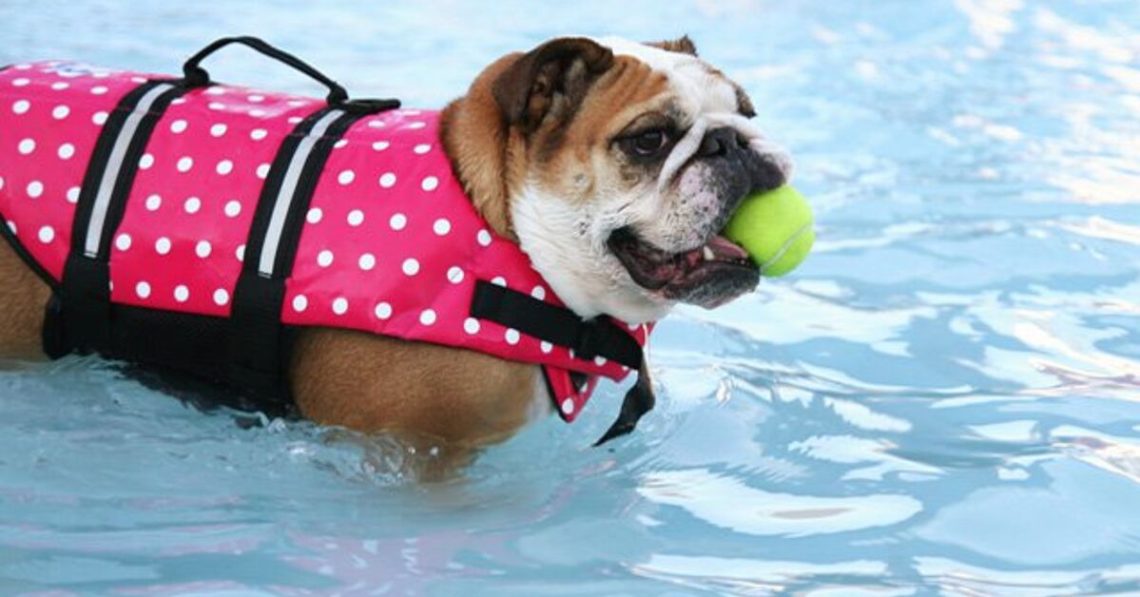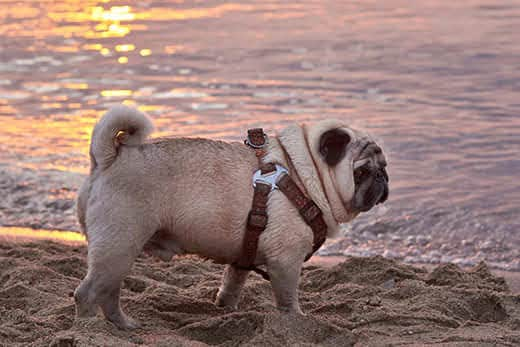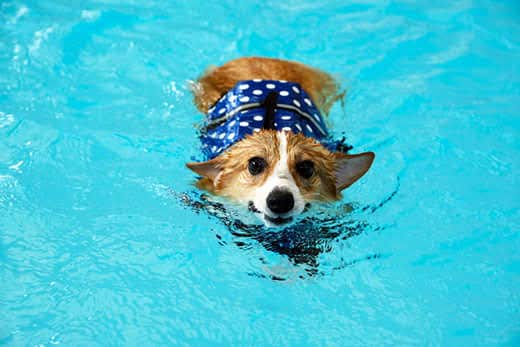
Which dog breeds can’t swim?
Some breeds are great in the water, while others will struggle to swim no matter how hard they try. Which dogs are bad swimmers?
Contents
Which dogs can’t swim
 According to the American Kennel Club (AKC), dog breeds that can’t swim usually share some common characteristics. For example, brachycephalic breeds with flat or very short muzzles are generally not suitable for swimming. The fact is that water can easily get into their noses and they can drown.
According to the American Kennel Club (AKC), dog breeds that can’t swim usually share some common characteristics. For example, brachycephalic breeds with flat or very short muzzles are generally not suitable for swimming. The fact is that water can easily get into their noses and they can drown.
Pets with a large barrel-shaped body, like dogs with a long body and short legs, find it difficult to stay afloat. Dogs with long or thick double coats can also have difficulty swimming. Finally, some breeds simply can’t handle the shock of being submerged in cold water.
Dog can’t swim? Perhaps she is one of those breeds that prefer to stay on the shore. Among the four-legged friends who are happy to skip a trip to the water, the following can be distinguished:
1. Bulldog
For both English and French Bulldogs, water poses a triple threat as they have flat muzzles, barrel-shaped bodies and short legs. In other words, bulldogs are simply not made for swimming. Even one of these traits can make swimming difficult for a dog, and they have all three. So in a land of dogs that can’t swim, bulldogs are king.
2. Pugs
Pugs would love to run and splash around in the shallow water, but their flat faces make it hard for these dogs to breathe. They also make an effort to keep their heads above the water. For these reasons, pugs are not swimmers. For many brachycephalic breeds, including pugs, keeping their muzzle above the water means tipping their head too far back, PetGuide writes.
3. Bull Terriers
Despite belonging to the category of active terriers, due to the combination of short legs and deep chest, it is difficult for the Bull Terrier to stay afloat. Even its close relative, the Staffordshire Bull Terrier, which is a much larger dog, will not make a good swimmer. Since the dense, heavy muscles and large head of pets of this breed create a problem when they are in the water.
4 Basset Hounds
The body of the Basset Hound is not designed for swimming due to the large head and short legs, which make it difficult to keep afloat. In addition, the long, flexible ears that are the hallmark of this breed are prone to developing infections when water enters the ear canal.
5. Boxers
This is another large and athletic dog breed that you might think of as natural swimmers. But the flat muzzle makes swimming just as dangerous for the Boxer as it is for the more diminutive Pug. Difficulty breathing and difficulty keeping the nose above the water can cause the boxer to tire quickly and risk drowning if left in the water for too long.
6. Corgi
Despite their love of the water, neither the Cardigan Welsh Corgi nor the Pembroke Welsh Corgi are good swimmers. This is due to the combination of their long body, barrel chest and disproportionately short legs. Therefore, it is better if they splash in shallow water.
7. Fee
Like the Corgi, the elongated body and short legs of the Dachshund prevent them from becoming good swimmers. Even in the case of swimming in shallow water, the small paws of the dachshund can get tired. The dachshund must be closely monitored when it is near water of any depth.
8. Shih Tzu
Like many other small breeds, the Shih Tzu has to deal with a number of challenges. Not only does the shortened muzzle and small paws make it difficult to hold the nose and graze above the water, but their long dense coat, when wet, can make the dog heavier and close the muzzle, further complicating the breathing process. In addition, if these little dogs spend too much time in the water, they can catch a cold.
Swimming for dogs: how to be safe
 If one of this breed lives in the house or the dog has similar physical characteristics, it is important to take measures to ensure the pet’s safety in water objects, whether it be a pool or a boat. You can protect your pet in the following ways:
If one of this breed lives in the house or the dog has similar physical characteristics, it is important to take measures to ensure the pet’s safety in water objects, whether it be a pool or a boat. You can protect your pet in the following ways:
Buy a good dog life jacket and put it on your pet whenever he is near any body of water, including a pool. The vest should be made of waterproof materials, selected in accordance with the size and weight of the dog, and preferably equipped with a handle that will allow you to quickly pull the dog out of the water if necessary. The fit should be loose enough for the dog to be comfortable, but tight enough so that it does not slip out of the vest.
Arriving with a dog on a lake or beach, you should stick to shallow water. Let your dog walk or splash in the water if he likes it, but don’t force him to go into the water if he doesn’t want to. In any case, you do not need to let her go to a depth above her head.
If the house has a swimming pool, you need to fence it off so that the dog does not fall.
Sometimes even the most reliable fences are not enough to keep the dog. You can install a ramp that will allow the pet to easily get out of the pool if he falls into it.
It’s also a good idea to teach your dog how to swim safely. According to the AKC, the best way is to lead by example from another dog. You can find a friend’s or neighbor’s pet that swims well and gets along well with the dog. Then invite them to play by the pool under supervision. Watching his four-legged friend, the pet will understand what needs to be done. The main thing is not to forget about the vest even for the duration of the workout.
It is always necessary to carefully observe the dog when it is near water, including in shallow water.
- If the owner wants to give the pet an opportunity to cool off in the summer heat, you can consider purchasing a small plastic pool for children. They are small enough that the dog can stand in the water, and at the same time he can splash in it perfectly.
Not all dogs are good swimmers, and the above list of breeds is far from complete. Sometimes even those pets that were bred for swimming and other water activities do not like to swim. Apart from bathing, you should never force a four-legged friend who doesn’t like the water to swim or play water sports. Despite the innate instinct to row in the water, not all dogs have a warm relationship with the water element.





